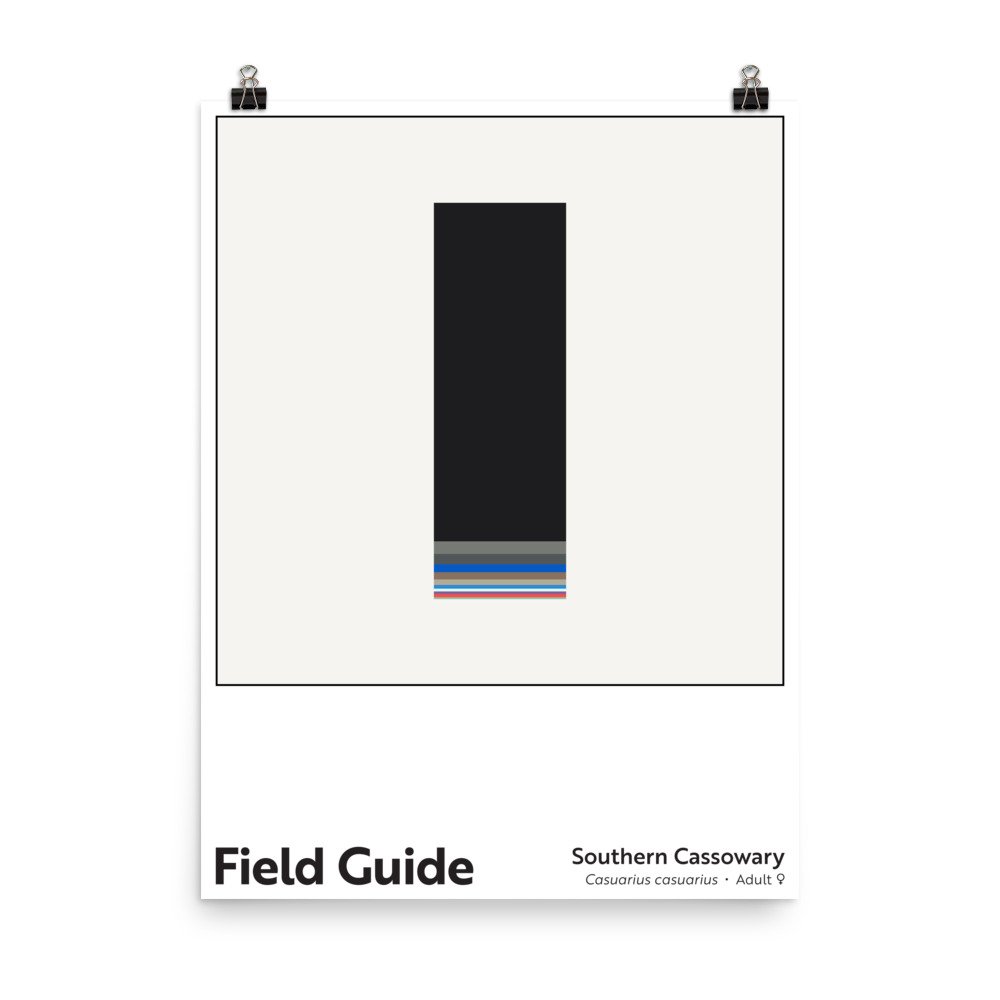Field Guide : Southern Cassowary (Female)
Field Guide : Southern Cassowary (Female)
Unlimited edition. 18 x 24 inch, museum-quality poster on matte paper.
Should you research the southern cassowary online, you’ll come across two repeated claims. It’s described as the world’s fourth-largest bird and the *most* dangerous.
Excepting individual variation, the first of those claims is accurate; a large female stands up to 6 feet (1.8 meters) tall and can weigh nearly 200 pounds (85 kilograms). For good measure, her casque (the enlarged, bony head structure) is taller and more imposing than a male’s, and she shows brighter colors on her face and neck. Unsurprisingly, female cassowaries dominate the males. For much of the year, cassowaries are solitary birds, coming together only briefly to mate during the late winter and spring breeding season. The male builds a ground nest – a scrape lined with plant material – and hopes to be selected by a female for breeding. If he gets lucky, the female will then lay a clutch of large green eggs in the nest and depart. The male incubates the eggs and raises the chicks on his own. The female, unbound to any young, may seek more males to breed with. (I wondered about the casque function. Apparently, in the case of cassowaries, casques help manage temperature by efficiently shedding heat or restricting heat loss, as needed. Cassowaries have been observed dipping their casques into water when air temperatures are especially high.)
What about the second of those claims – is the bird’s dangerous reputation deserved? Yes and no. It’s true that these large and occasionally aggressive birds have killed humans, but cassowaries are unlikely to attack without provocation. In some cases, including the one 20th century fatality (1926), the bird involved was being beaten with a club when it kicked one of its teenage assailants in the neck, opening the boy’s jugular vein. In most cases of conflict, the birds involved have been hand-fed and therefore associate humans with food; when they approach a human who does not provide them with food, they can become aggressive. Perhaps it’s best to think of these shaggy, mostly black birds as avian analogs of black bears; that is to say, habituated individuals can be dangerous.
Note: These archival poster prints feature rich, appealing colors. I encourage customers to take care in handling them until they are framed/protected for display; the darker colors on the matte paper can be scratched. They ship rolled, so customers need to flatten them before framing (or have their framer do so).
Charitable Sales Model: Whenever one of these poster prints is purchased, a charitable contribution equal to 10% of the print’s cost (or $3.60) is made to a nonprofit working to tackle environmental or social challenges. Read more about my charitable sales model here.

